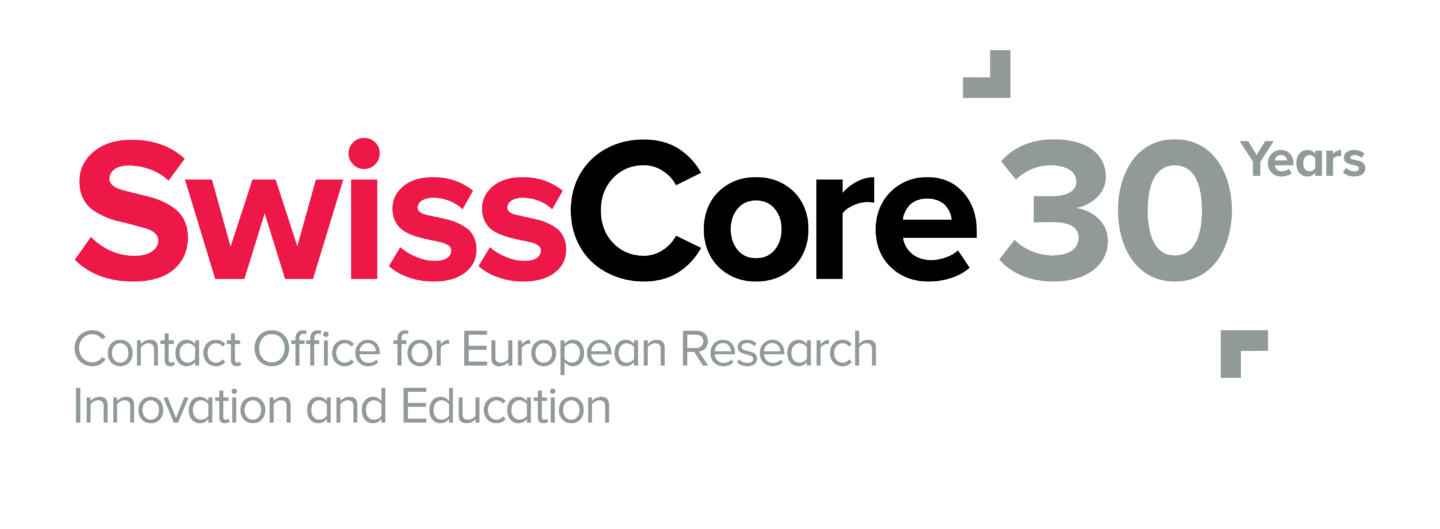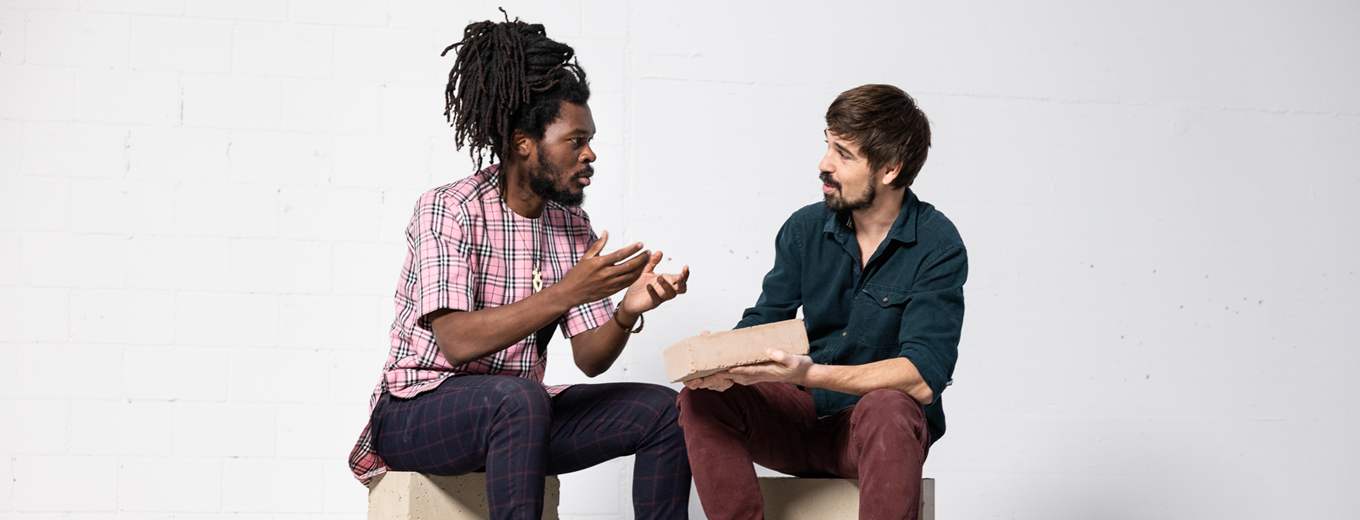Discover how Oxara has developed cement-free alternatives by transforming excavation material and demolition waste into new sustainable construction materials.
Oxara’s journey began with one powerful question: “Why are we still building our future with materials that harm it?” In 2015, materials scientist Gnanli Landrou started experimenting at ETH Zurich with ways to transform excavation and demolition waste into new construction materials. A few years later, he teamed up with Thibault Demoulin, a fellow materials scientist passionate about heritage preservation and innovative building processes. Together, they founded Oxara in 2019.
Oxara is a reference to a north Togolese word Ossara, which means “gathering”. The first reason why they chose this name was to show that, as Landrou puts it, “in order to transform an industry, one needs a strong community – a vibrant ecosystem that is capable of change”. The second reason is reflected in their logo: Oxara excavates (half-circle at the bottom) and then builds (half-circle at the top). In between, they mix the materials (thus, the “x”) while adding some minerals. Those lines are, however, not fully connected, showing that it is not only an infinite loop of excavating and reusing materials to build, but that Oxara develops itself and its products, learns, and acknowledges the possibility of failure – a condition that many start-ups face. The point is not to sell infinite full circularity, but to pave the way for sustainable alternatives actively addressing the challenges of their industry.
From the outset, the young start-up received support from its home institution and other Swiss support schemes (e.g. Venture Kick, Innosuisse) to develop its technology and business model. One year after spinning out from ETH Zurich, Oxara received its first support from the EU, namely a grant from the SME Instrument under Horizon 2020, which helped demonstrate the technical, commercial, and financial viability of its solution for sustainable construction and affordable housing.
That support continued under Horizon Europe: In 2021, Oxara was selected by the European Innovation Council (EIC) for an EIC Accelerator grant of almost €1.9 million. Because Switzerland was not associated to Horizon Europe at that time, replacement funding was provided through the Swiss State Secretariat for Education, Research and Innovation (SERI). More concretely, this backing helped to validate the research and development part and optimise the manufacturing process with an industrial proof-of-concept. Unfortunately, Switzerland’s non-association to the EU programmes halted the process of applying for other instruments, delaying some initially targeted milestones, such as product certification. Moreover, as Oxara only received the grant component of the EIC through SERI, the non-association meant that the start-up was no longer eligible for the blended finance (grant and equity) they originally requested, and for potential follow-on investments through the EIC Fund.
Against this backdrop, Oxara pursued its journey and, thanks to these initial grants and additional public and private funding, Oxara now offers two products originating from the same idea: (i) a cement-free binder made from reused demolition waste, and (ii) mineral-based activators that transform clay-rich excavation material into castable building materials.
For Landrou, the experience of receiving support from both national and international public programmes was eye-opening: “When we look at these programmes, it is a lot of money, but it is also very time consuming. The reporting that comes with it is complex, but it is a good way to focus”, he explained. The process provided a framework for Oxara: “It helped us identify what really mattered, and to define clear objectives, such as what we wanted to achieve within a month”, he continued. “As pure researchers, it is often difficult to adopt this mindset, but the programmes brought clarity and conciseness to what we could do”. This example demonstrates that transfer from academia to industry is possible and becomes stronger when research outcomes are clearly disseminated and brought to light.
Oxara is now ramping up its production to supply its customers with its existing proven solutions, while at the same time continuously improving product specifications, qualifications, and performance, thanks to direct feedback from industry partners. Scaling up remains a challenge, but the start-up is on a good track, notably after the signature of a strategic partnership with the MÜLLER-STEINAG Group (MSG), a leading producer and supplier of precast concrete products and elements, ready-mix concrete and building materials in Switzerland. More recently, a strategic agreement was signed with the Swiss company Granol, which builds on over 70 years of developing dry building materials for facades, ceilings, floors, and walls. Granol will act as a production partner for Oxara’s cement-free binder Oulesse, thus helping increase production capacity.
These partnerships with MSG and Granol align with Oxara’s commercialisation and market entry strategy, and the first results of these cooperations are already emerging. Switzerland remains the first market for the company, but with growing demand for climate-friendly construction solutions, other markets in neighbouring countries are underway, such as Austria, France, and Germany. Beyond the European continent, Oxara is also part of the ongoing construction of the Swiss Embassy in Yaoundé (Cameroon), aiming to build a “green” embassy while procuring Swiss technologies combined with traditional Cameroonian construction methods. You can learn more about the Yaoundé project on Oxara’s website and on the Swiss Confederation’s website.
With these solutions, Oxara is proving that circular, low-carbon building materials are no longer experimental, but are real alternatives for the construction sector. By re-imagining waste as a resource, Oxara is helping build not only sustainable homes, but also a more sustainable future.

